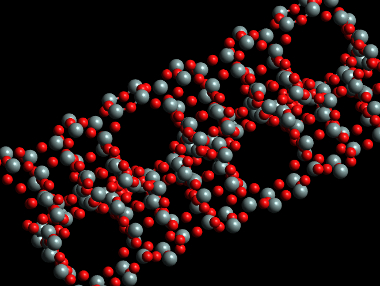Porous materials have a variety of industrial, environmental, and health applications, ranging from catalysis to medical diagnosis. They contain a complex network of macro- (>50 nm), meso- (2–50 nm) and micropores (< 2 nm). The pore size distribution, accessibility, and interconnectivity of the porous domains directly relate to the catalytic performance of a porous material.
Visualizing the pore architecture and associating it with the materials’ functionality could enable the design of more efficient catalysts with a high product selectivity and a long lifetime. So far, however, a visual correlation between pore network and functionality under realistic conditions had not been realized.
Bert M. Weckhuysen, Utrecht University, The Netherlands, and colleagues have applied confocal fluorescence microscopy to establish a visual relationship between the pore accessibility and interconnectivity of industrial catalysts and their performance under realistic conditions. Clay-bound ZSM-5 zeolites (structure pictured) were used to catalyze the conversion of methanol to hydrocarbons. This process produces light-absorbing carbocations that were excited with a laser beam and visualized using a confocal fluorescence microscope.
The researchers established a direct relationship between pore architecture, molecular transport, and catalyst deactivation. They found that larger regions of accessibility increased the amount of larger products, which over time led to the deactivation of the catalyst. Besides heterogeneous catalysis, the proposed approach could also be used for the investigation of porous materials used in other areas, such as drug delivery systems, batteries, or membranes.
- Visualizing pore architecture and molecular transport boundaries in catalyst bodies with fluorescent nanoprobes,
Gareth T. Whiting, Nikolaos Nikolopoulos, Ioannis Nikolopoulos, Abhishek Dutta Chowdhury, Bert M. Weckhuysen,
Nat. Chem. 2018.
https://doi.org/10.1038/s41557-018-0163-z




